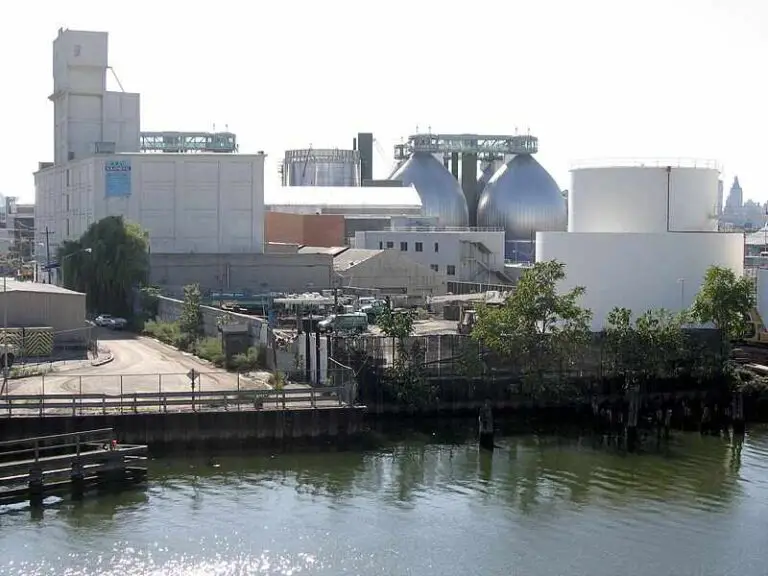5 Importance of Carbon Capture and Storage Explained
Importance of carbon capture and storage includes; atmospheric emissions reduction, increase in ecologic productivity, energy safety improvement, circular economic growth, and energy transition facilitation.
1). Atmospheric Emissions Reduction (As an Importance of Carbon Capture and Storage)
The most obvious and basic importance of carbon capture and storage is its role in reducing atmospheric emissions.
Being itself a major greenhouse gas, the capture and storage of carbon dioxide (as well as biomass and other forms of carbon) is an effective way to address issues like global warming and climate change [5].
These issues usually arise as environmental impacts of human activities and processes such as electricity generation, transport, construction, and manufacturing.
Carbon capture and storage is particularly effective for this purpose because it can be implemented at emission sources such as industrial exhaust outlets, to intercept carbon dioxide at the point of production and release [3].
Aside artificial capture and storage, natural carbon sequestration is also effective for reducing the concentration of carbon dioxide in the atmosphere, through biological capture and subsequent storage in carbon sinks.

2). Increase in Ecologic Productivity
Carbon capture and storage can be seen as a measure of soil conservation, because when carbon is stored in soil, it improves its productivity and physicochemical characteristics.
Increasing soil organic carbon is one of the objectives of sustainable agricultural practices like crop rotation, organic farming and cover cropping [2].
Carbon capture and storage can increase soil carbon, which in turn increases the growth rate for plant biomass.
This biomass is subsequently circulated across the various trophic levels of the energy pyramid through feeding, thereby distributing bioenergy that is needed for growth and survival of the entire ecosystem.
Increased soil carbon leads to increase in soil microbial activity, and other biochemical processes that improve moisture retention and infiltration rates [4].
These changes in turn reduce the risk of some forms of environmental degradation that can affect ecologic productivity, like drought and desertification.
3). Energy Safety Improvement (As an Importance of Carbon Capture and Storage)
Carbon capture and storage increases ‘energy safety’ by reducing the associated pollution risks of energy production, conversion and management.
This can be alternatively referred to as ‘decarbonization of energy’, and is particularly useful with respect to fuel conversion and electricity.
Carbon capture and storage can reduce the environmental impact of emission-producing power plants like coal-fired, petroleum-fired, and waste-to-energy plants, as well as nuclear power plants which indirectly produce emissions during the extraction of nuclear fuel.
It is important to note that carbon capture and storage does not improve energy efficiency, and neither facilitates energy conservation. Rather the process is usually energy-consuming and can be costly as well.
Innovative improvements in carbon capture and storage technology, are likely to address these drawbacks.
4). Circular Economic Growth
Carbon capture and storage supports the concept of circular economy in its goal to reduce atmospheric emissions and increase the sustainability of production [1].
The role of carbon capture is similar to that of other sustainable practices and concepts like recycling, eco-friendly production, and sustainable farming. It also supports these practices by improving their energy and environmental safety.

5). Energy Transition Facilitation (As an Importance of Carbon Capture and Storage)
Carbon capture and storage is a sustainable concept that facilitates the energy transition by optimizing the renewable energy sector and supply chain in terms of effects on the environment.
This is important because the energy transition is hinged upon environmental sustainability among other goals. The manufacture of renewable technological systems and components like solar panels and wind turbines, is associated with greenhouse emissions, thereby contradicting the purpose of these technologies.
With carbon capture and storage, the entire process of energy production and consumption can be decarbonized.
Carbon capture and storage can also reduce emissions from biorefineries and waste-to-energy plants, as well as from the manufacture and usage of deep cycle batteries, electric cars, hybrid cars, and smart grids among other sustainable technologies.
Conclusion
The importance of carbon capture and storage include;
1. Atmospheric Emissions Reduction
2. Increase in Ecologic Productivity
3. Energy Safety Improvement
4. Circular Economic Growth
5. Energy Transition Facilitation
References
1). Budzianowski, W. M. (2017). “Implementing carbon capture, utilisation and storage in the circular economy.” International Journal of Global Warming 12(2):272. Available at: https://doi.org/10.1504/IJGW.2017.084510. (Accessed 3 October 2022).
2). Laamrani, A.; Voroney, P.; Berg, A.; Gillespie, A.; March, M. J. Deen, B.; Martin, R. C. (2020). “Temporal Change of Soil Carbon on a Long-Term Experimental Site with Variable Crop Rotations and Tillage Systems.” Agronomy 10(6):840. Available at: https://doi.org/10.3390/agronomy10060840. (Accessed 3 October 2022).
3). Madesjski, P.; Chmiel, K.; Subramanian, N.; Kuś, T. (2022). “Methods and Techniques for CO2 Capture: Review of Potential Solutions and Applications in Modern Energy Technologies.” Energies 15(3):887. Available at: https://doi.org/10.3390/en15030887. (Accessed 3 October 2022).
4). Rawls, W. J.; Pachepsky, Y.; Ritchie, J. C.; Sobescki, T. M.; Bloodworth, H. (2003). “Effect of soil carbon on soil water retention.” Geoderma 116(1-2):61-76. Available at: https://doi.org/10.1016/S0016-7061(03)00094-6. (Accessed 3 October 2022).
5). Singh, U. (2013). “Carbon capture and storage: An effective way to mitigate global warming.” Current Science 105(7):914-922. Available at: https://www.researchgate.net/publication/270159236_Carbon_capture_and_storage_An_effective_way_to_mitigate_global_warming. (Accessed 3 October 2022).




